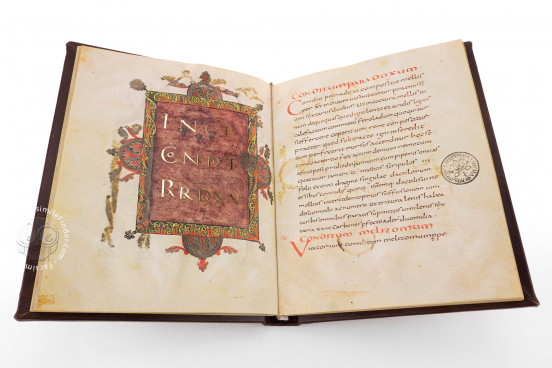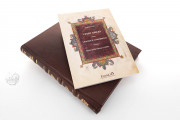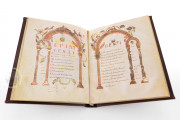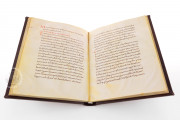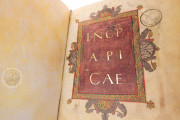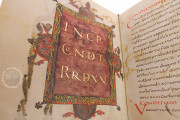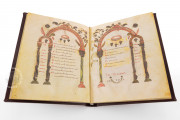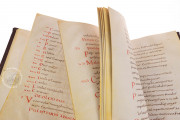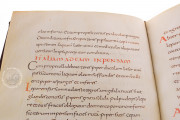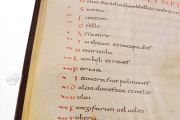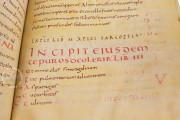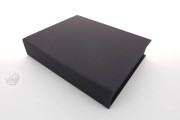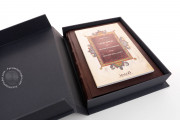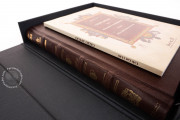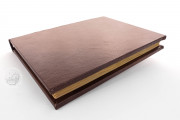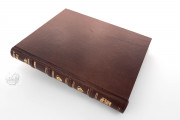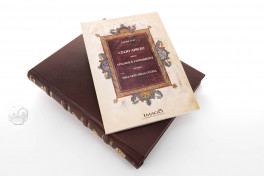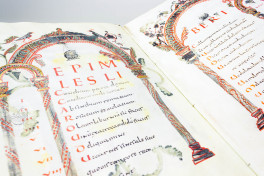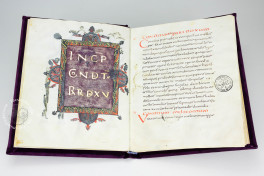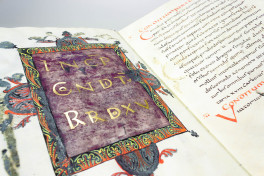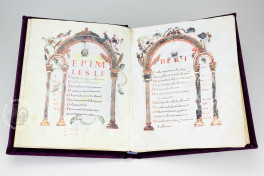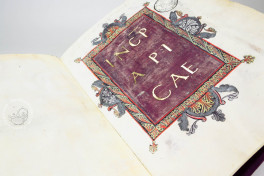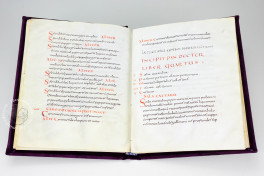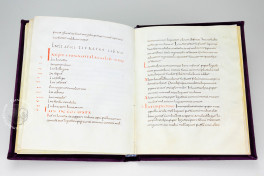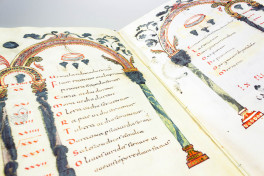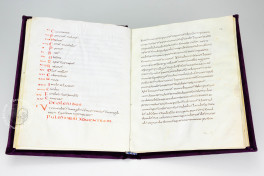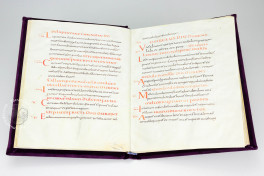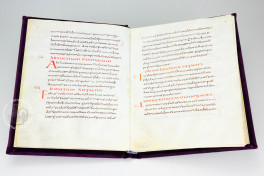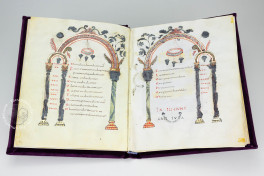Apicius de Re Conquinaira, or On the Subject of Cooking, is of unknown authorship, sometimes credited to an otherwise unknown Caelius Apicius. The Latin work contains ten chapters, each titled in Greek, covering diverse topics related to cooking and housekeeping. Its exact origin is uncertain. The text is compiled from various sources from the first to fifth centuries. The work survives in two Carolingian manuscript copies, this copy in the Vatican and New York, NY Academy of Medicine, Vault MS 1, and several early printed versions.
This book was created in the mid-ninth century in the Carolingian monastery at Tours and is the only illuminated manuscript copy of Apicius. Its decoration comprises two gold and silver framed title pages with a purple ground and gold lettering and four pages of an arcaded table of contents. The remainder of the pages contains the Latin text in twenty long lines in well-formed Carolingian minuscule with subtitles in rubricated Roman Uncial. The regal treatment of these ancient recipes indicates the importance of fine cooking held for the Carolingian elite.
The Gospel of Carolingian Cookbooks
This copy of Apicius De Re Coquinaria was made in the renowned scriptorium of the monastery at Tours in the middle of the ninth century. Its six decorated pages—two framed “purple page” title cards and four arcaded chapter lists—are reminiscent of a Gospel book.
The title cards have intricate acanthus frames of dark blue-grey and orange-red with additional ornamentation in silver, since tarnished black. The parchment within the frame is stained purple-red and the Roman Uncial display lettering is in gold.
“Caelius Apicius” and the Art of Fine Cuisine
The authorship of De Re Conquinaria is uncertain. The traditional attribution is to an otherwise unknown man, Caelius Apicius. This name is derived from the framed inscription on fol. 1 “API CAE”. The text has erroneously been attributed to a notorious epicurean of the first century, Marcus Gavius Apicius.
The book’s ten chapters contain around 500 recipes and are grouped by the type of main ingredient of the dish, similar to modern cookbooks. It provides insight into the fine cuisine of the late Antique Mediterranean.
A Cookbook for Kings and Popes
The decorated pages of this manuscript indicate it was made for a Carolingian royal, probably Charles the Bold. Its fate is unknown until the fifteenth century when it was owned by the Dukes of Urbino. It eventually passed to Pope Innocent XII and subsequently the Vatican in the late seventeenth century.
Binding description
The current binding is a modern era red morocco with cooking vessels in gilt tooling on the spine.
We have 2 facsimiles of the manuscript "Apicius De Re Coquinaria":
- Apicio - De Re Coquinaria (Leather Edition) facsimile edition published by Imago, 2020
- Apicio - De Re Coquinaria facsimile edition published by Imago, 2013

